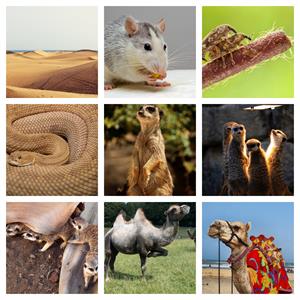
PUMPA - SMART LEARNING
எங்கள் ஆசிரியர்களுடன் 1-ஆன்-1 ஆலோசனை நேரத்தைப் பெறுங்கள். டாப்பர் ஆவதற்கு நாங்கள் பயிற்சி அளிப்போம்
Book Free DemoDeserts are where no one can find water, and they are known to be one of the driest places on Earth. The animals present in the desert can not survive without water, so they seek a different living place for every climatic change. The desert is at high temperatures, and they have the worst conditions where the animals can't survive.
Gerbils occupy places underground to feel less heat. Some insects like Darkling Beetles catch the drops of moisture on their legs and suck them through the air.
During the spring season, the weather usually turns warmer, and trees begin to grow their leaves, and plants start to flower. Deserts are generally rocky and dotted with bushes. The rattle of rattlesnakes could be heard thirty meters away, and they can strike at the speed of lightning.
Mongooses, being mammals, prefer to hunt in groups. And they always check for predator's movement. Mongooses travel in a group in search of food. If a mongoose cannot see other members of its group, it communicates by making bird-like calls which tells the others where they are, thereby being in contact even when unseen.
Camels, which were once considered wild animals, were tamed by our ancestors a long time ago. Usually, camels live within small groups, and each group can count up to thirty camels. While their coats grow long and shaggy to trap heat during cold season, the coat becomes short and cleaner during warmer climes. There are two types of camels, namely, the Dromedary (single hump) and the Bactrian Camel (double hump).
The purpose of the hump is to store fat, and it acts as a storage container. If the camel doesn't have anything to eat for several days, the hump will become smaller as it uses up the stored fat. All these features help camels adapt to desert life.
